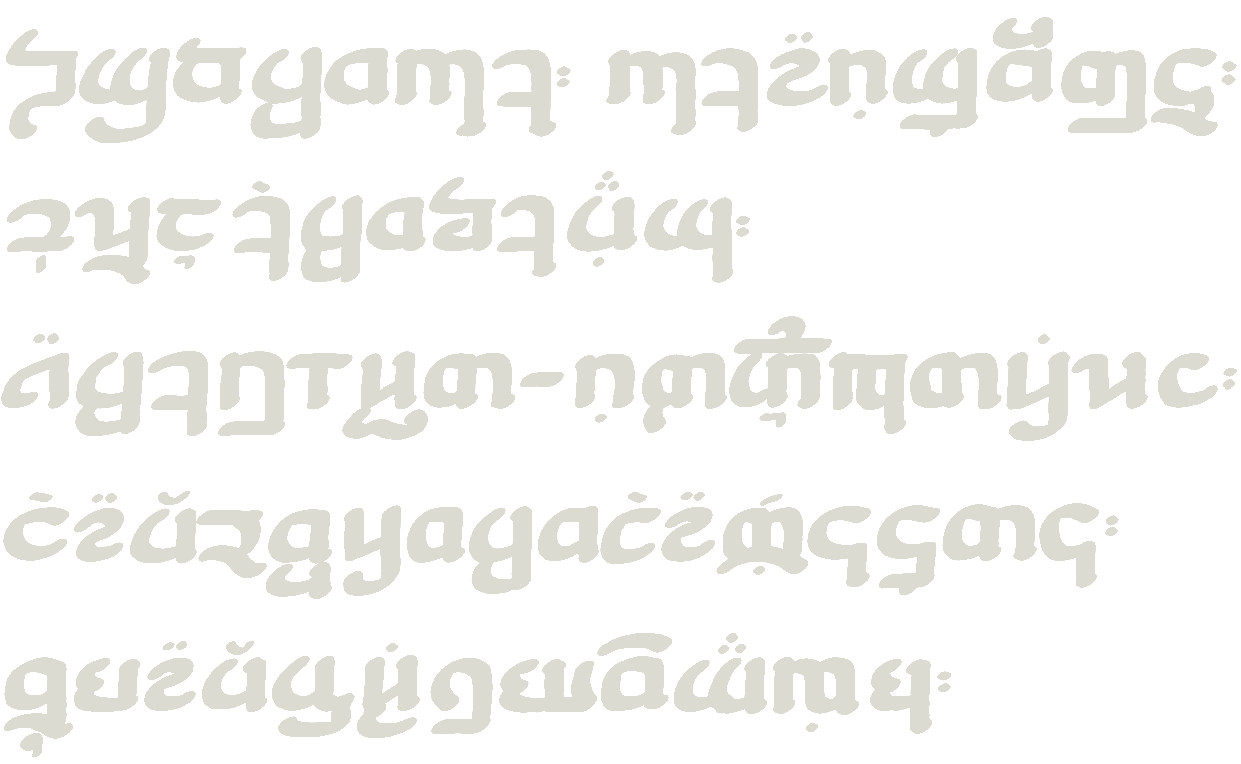
There are 5 Rules that should always be observed and kept in mind when using the cards. They are unfortunately in the Mysti script and are thus yet to be deciphered. They have been included, as originally penned, below. It is hoped that an enterprising and clever reader will manage to decipher the script someday.

Beyond these Rules, it is still possible to discern from imagery, historical context, and the Quantum theoretical basis what the preferred usage may be.
The essence of the Quantum Realm is Chaos. Cartomancy and cardplay are also founded on Chaos, and then creating order and structure from it. That is what the shuffle is for.
Cards should be shuffled face down so as not to break the superposition of states. Randomness will be further achieved if the cards are not visually observed at all and handled only as is necessary to randomize them—any interaction can resolve their states prematurely and forestall a truly random outcome.
Orientation is a degree of freedom needed for some divination. To randomize orientation, spread the cards out on a table and shuffle them with the palm of your hands, ensuring that the cards can separate and recombine in different orders if needed.
If engaging in Cardplay or orientation-independent Divination, you may randomize the cards with any playing-card shuffling method.
Collect the cards into a pile. Allow a second Individual to cut the deck without looking at the underside card; bringing an outside party into the randomization process introduces further uncertainty. Once the cards are piled and the shuffle is complete, their states are regarded as fixed but unknowable. The backs are rotationally symmetrical and identical, so no further information may be gleaned until individual cards are observed.
So much has been written about the methodology of tarot divination that the brevity of this section here will be puzzling to some users. But it is exactly because of that abundance, and my own inexperience, that I keep this section short.
So as not to leave this section completely empty, I will share one of the most basic readings out there as I have applied it.
Randomize the cards as above. Once piled, spread them across in a single file; they need not be fully separate, but the readee should be able to comfortably pick any card.
Query the deck and reader before a card is chosen. It should be somewhat specific, related to the readee’s personal experience in some way, and for best results to relatively near-term affairs.
The readee then chooses three cards. These represent Past, Present, and Future in relation to the Query. If considering reversals, be sure to flip them across the horizontal access so as to maintain rotational state.
Consult the cards carefully, according to imagery, one by one. Use this book as guidance but remember that the imagery and your own Unconscious interactions supersede it. If follow-up questions emerge, draw one additional card for each one.
Do not use the cards to approach the same question within too short a period. You will otherwise pull results that are truly random and do not interrelate to your question at all. Sufficient time, at least of some weeks, must be given for further evolution and natural randomization of the real-world variables around the issue.
I will reemphasize this point repeatedly: do not rely solely on this book for understanding the cards! The imagery of the card is important. Really look at them. Think about what each part, and the whole, mean to you. How does it make you feel? How might it connect to your question or problem, and all the variables around it? Your response and interpretation may be considered and intellectualized, or it may be visceral and indescribable. Either is valid as long as it is genuine for you.
Reversals are tricky. Many tarot readers do not use them, or at least advise against them for beginners. The challenge is inherent in the fact your reactions to the cards must now be inverted in some way, and the anti-state for something as complex as a tarot card is not simple to visualize.
If you are reading reversals, remember (and I will emphasize this point again repeatedly too) that they may not only mean the “opposite” of the upright understanding. They may mean an excess of the upright form, or an insufficiency of it, or a recession of it, or a blockage that prevents it from either entering or progressing through your life.
Note, also, interactions between the cards. Who is facing who? What connections, shared motifs, flows, clashes, are apparent between cards? If they are pointedly disconnected from each other, then what do you make of that? Take in not only each card’s image but the whole scene before you. The cards, not this book, are the essence of a reading.
Divination is only one part of what tarot can do. A full(er) discussion of games of tarot, their history, and some examples can be found here.